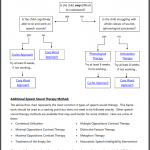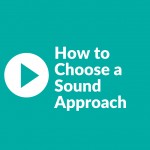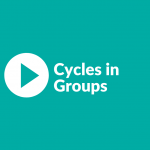Cycles Approach
Description:
The cycles approach to speech therapy is intended for children who meet the following criteria:
- Highly unintelligible (very difficult to understand)
- Frequently leave out or omit speech sounds
- Replace some sounds with other sounds
- Don’t use very many different consonant sounds
Overview:
Task Analysis (How To):
- Choose Processes to Target: Make a list of the targets that the child is not currently using correctly in conversation but is stimulable for.
- Set Up Your Cycles: Choose phonemes to target for each pattern on your list.
- Run Your Sessions: Follow the session agenda below to run each session targeting that phoneme/pattern.
Activities:
Go through this list of potential targets (patterns) and see which ones the child is having some trouble with. Make a list of the targets that the child is not currently using correctly in conversation but is stimulable for.
- Does the child mark syllables (you can clearly hear how many syllables the word has) in 2- and 3-syllable words that have equal stress on each syllable? (ex: cowboy and cowboy hat)
- Can the child use the following consonants at the beginning of CV (consonant-vowel) structures: /m, n, p, b, t, d, w/? (ex: me, no, pie, bow, toe, do, we)
- Can the child use the following consonants at the end of VC structures: /p, t/ and/or /k, m, n/? (ex: up, out, ick, um, on)
- Are CVC and VCV words found in the child’s speech? (ex: cup and Emma)
- Are alveolar sounds present? /t, d, n, l/
- Are velar sounds present? /k, g/
- Are /s/ clusters present? (final position of words is easiest to elicit)
- Are liquids present? /l, r/
- Are nasals present? /m, n/
- Are glides present? /w/, “y”
You should now have a list of all of the patterns (listed above) that the child isn’t doing in conversation but is stimulable for. Prioritize them by starting with the ones that are easiest for the child to do. Choose the top 3-6 targets and disregard the rest for now.
Take the first pattern from your list and choose one phoneme (sound) from that pattern. Work on that first sound for 60 minutes (two 30-minute sessions, four 15-minute sessions, or however your schedule works). Then, choose another phoneme from that pattern and work on it for an additional 60 minutes. (if there is only 1 phoneme in a certain pattern that the child is having trouble with, move on to the next pattern). Then, move on to the next pattern.
Let’s do an example:
Pattern List:
- CVC words
- Velar sounds
- Final /s/ clusters
Session Length: 30 minutes
Session number with targets:
Sessions 1-2: CVC words that end in nasals
Sessions 3-4: CVC words that end in voiceless stops
Sessions 5-6: /k/ sound
Sessions 7-8: /g/ sound
Sessions 9-10: Final /st/ clusters
Sessions 11-12: Final /sk/ clusters
Do you see how each pattern gets two different phonemes targeted?
- Review: Review the previous session’s word cards.
- Auditory Bombardment: Amplified auditory stimulation is provided for 1-2 minutes: the clinician reads around 12 words that contain the target pattern for the session.
- Target Word Cards: The client draws, colors, or pastes pictures of 3-5 target words on large index cards. Child repeats the words modeled by the clinician.
- Production Practice through Experiential Play: While playing games, clinician and child take turns naming the pictures on the cards. Clinician provides models and tactile cues. The child should achieve 100% accuracy (choose words that are the easiest for the child to produce).
- Stimulability Probe: The clinician asks the child to say a bunch of words that contain the target pattern for the next session. Whichever sound is easiest for the child will be targeted during the next session (for example, the child may have to say a bunch of /s/ clusters and the easiest one is selected for practice).
- Auditory Bombardment: Repeat step 2.
- Home Program: The child practices 2 minutes per day by having a parent or aide read the list aloud and then naming the picture cards of the production practice words.
Troubleshooting:
What do you do if these things don’t work the way they’re supposed to? Well, nothing’s ever easy, is it? Try these great troubleshooting tips that some of our other members have found helpful. Click the problem to drop down the link to the solution.






